Discover the ultimate road trip experience in Norway. These 18 iconic routes offer unparalleled scenic drives, enhanced by unique attractions along the way.
Soar over the stunning Atlantic Road bridges, where the sea stretches out on either side. Or, navigate the thrilling hairpin bends of Trollstigen, where each turn reveals memorable views of steep mountains and cascading waterfalls.
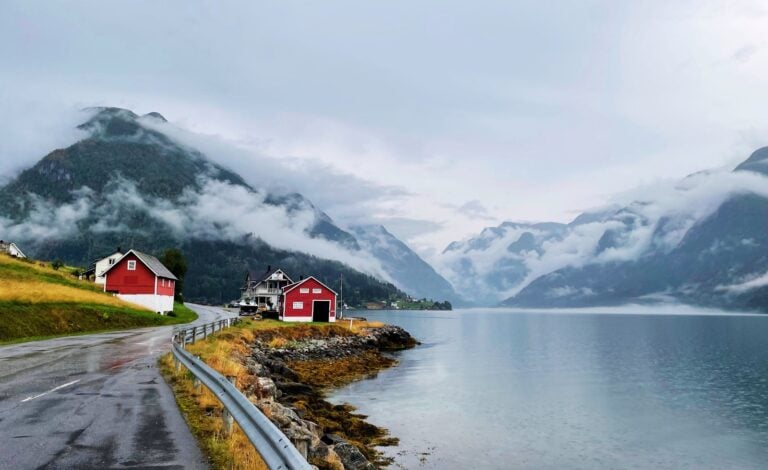
Traverse Norway's stunning landscapes through its 18 National Scenic Routes, each carefully chosen to showcase the country's breathtaking natural beauty.
These journeys not only connect destinations but also provide unforgettable experiences marked by awe-inspiring natural beauty and architectural ingenuity.
Supported by government funding, these roads have seen significant enhancements in infrastructure and facilities, including well-designed rest stops and picnic areas that double as architectural landmarks.
This investment means that each journey is as comfortable as it is memorable, making these routes not just roads, but destinations in themselves.
Planning a Scenic Road Trip
Before diving into the details of the 18 routes, it's worth spending some time to understand the planning that must go into a successful Norwegian road trip.
Road Trip Resources: Car Rental in Norway – Travel Insurance
Be aware that some routes may be closed during winter due to high elevations and adverse weather conditions.
Additionally, calculating your travel time involves more than just measuring distances. Allocate ample time for frequent stops, rest breaks, and sightseeing opportunities, as the stunning vistas will tempt you to pause more often than anticipated.
This careful planning will ensure a more enjoyable and thorough exploration of Norway's picturesque landscapes.
Fjord Region
Let's start with the most popular region for road trips in Norway. Driving in the Norwegian fjords offers everything from mountain passes to narrow roads hugging the fjord.
Aurlandsfjellet: The Snow Road
Aurlandsfjellet, often called the Snow Road, is distinguished by the deep snow banks that flank it for much of the year, making it a favorite among Norway’s national scenic routes.
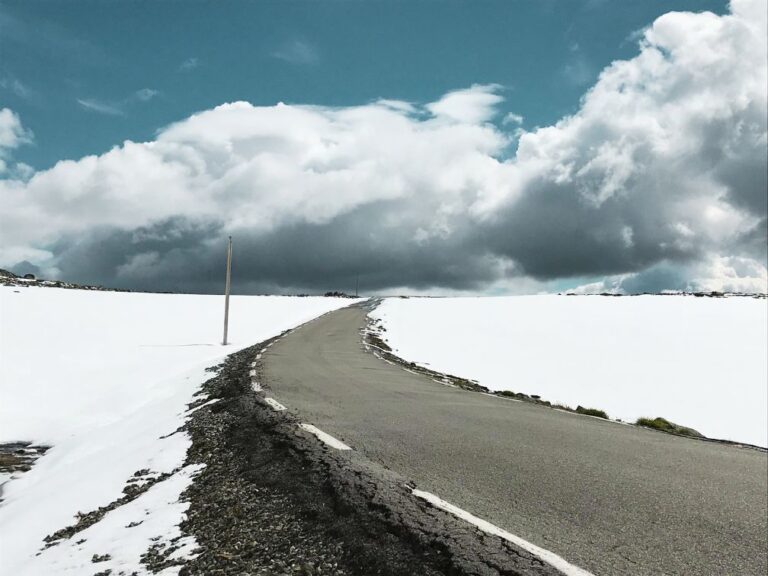
This route is particularly renowned for its dramatic contrasts—from towering mountains and dense pine forests to the expansive views of the fjord below.
While the road itself closes during winter, the Stegastein viewpoint remains accessible year-round, offering breathtaking views from 650 meters above Aurlandsfjord, presenting a perfect spot for panoramic photography and quiet contemplation.
Gaularfjellet
A less-traveled route within Norway's scenic roads, Gaularfjellet begins its picturesque journey alongside the vast Sognefjord, eventually winding its way upward through rugged mountain terrain.
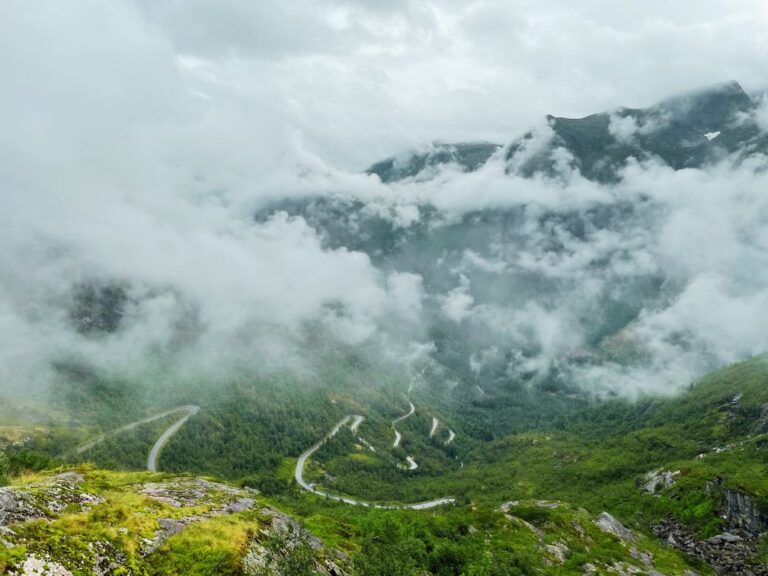
The journey starts at the charming village of Balestrand, a peaceful haven perfect for relaxation before your ascent. As you progress, you'll follow a dynamic watercourse that evolves from a tranquil river into roaring rapids, adorned by stunning waterfalls.
Along the route, the Utsikten viewpoint offers spectacular architectural design, perched dramatically on the mountain's edge, providing unmatched vistas of the surrounding landscape.
For adventurers, stopping to explore the diverse natural beauty on foot can enrich the experience significantly.
Geiranger-Trollstigen
The Geiranger-Trollstigen route in Norway is renowned for its breathtaking beauty, weaving through some of the most dramatic landscapes in Scandinavia.
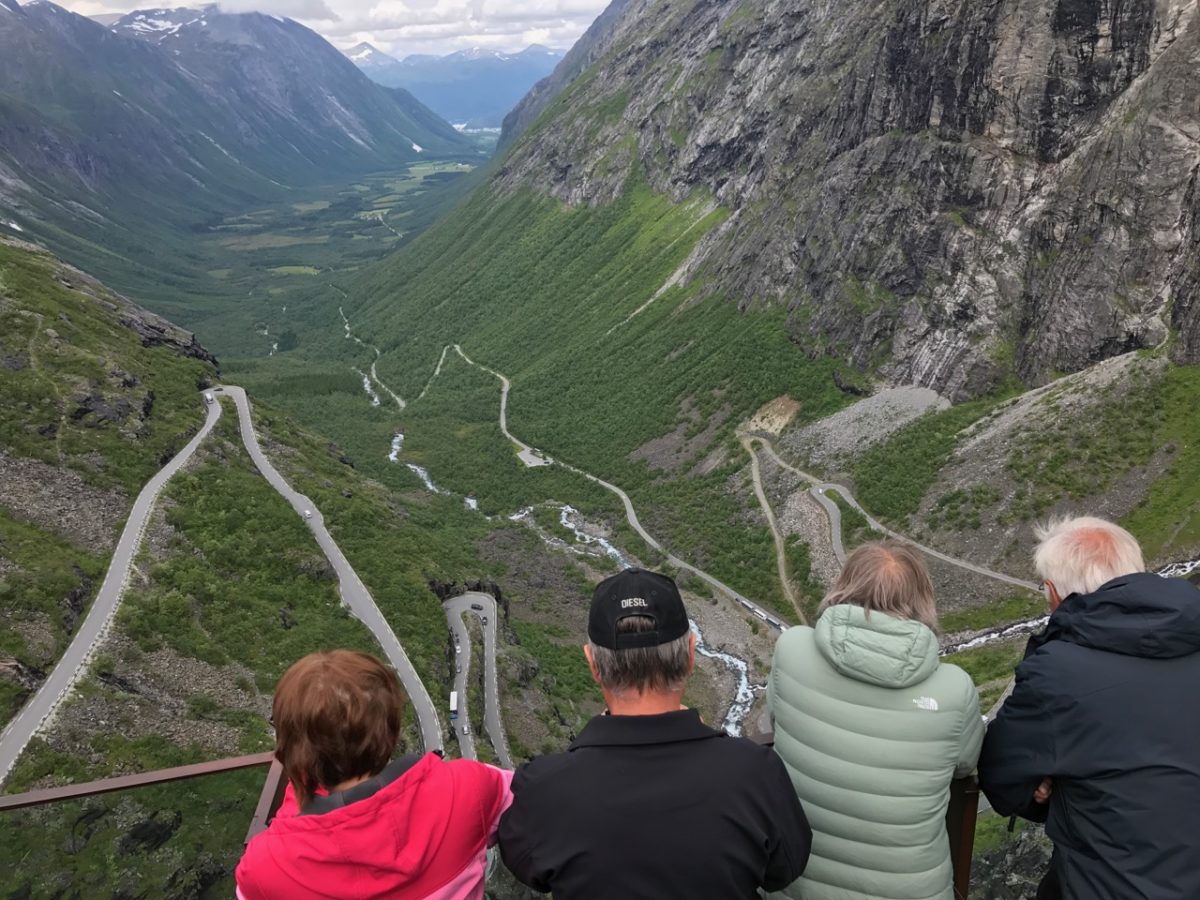
This route is famous for the steep and winding Trollstigen mountain pass, but that's just one highlight of this remarkable route. At the other end, you'll experience stunning views of the world-famous Geirangerfjord.
Along the way, travellers encounter sheer mountain faces, cascading waterfalls, and deep, lush valleys. Highlights include Gudbrandsjuvet gorge and the award-winning Juvet Landscape Hotel.
In Geiranger, key viewpoints like Ørnesvingen provide spectacular panoramic views, making this route a favourite for photographers and nature lovers alike. On the downside, it gets very busy in high season, so bring plenty of patience.
Hardanger
The Hardanger region in Norway offers scenic drives through a historic tourist area known for its dramatic landscapes of waterfalls and glaciers, and the vast Hardangerfjord.
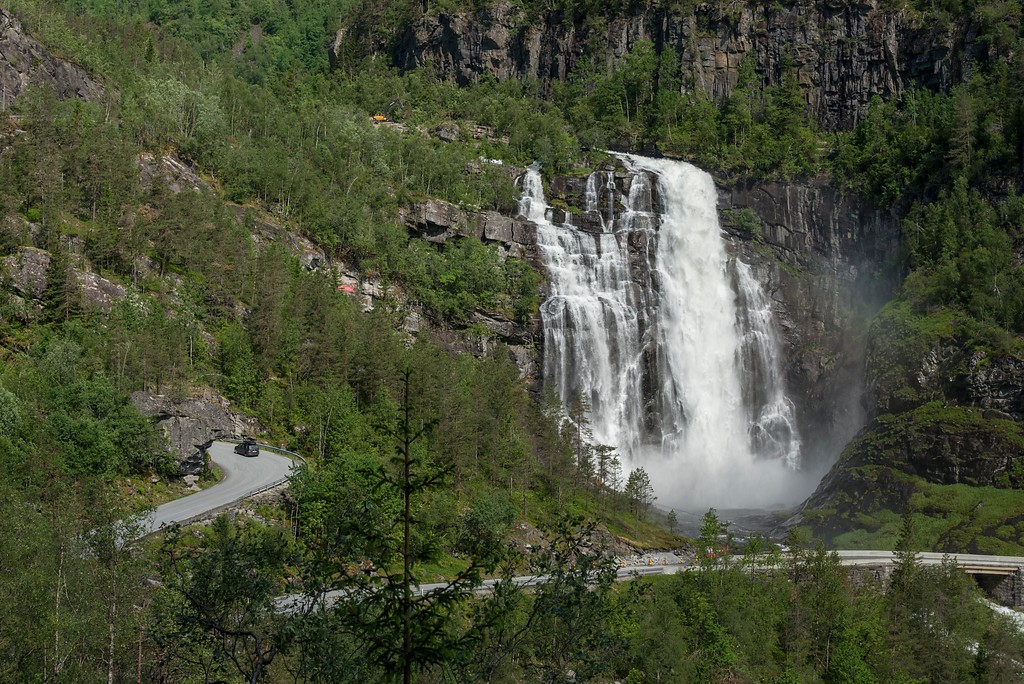
The area's beauty, resembling multiple postcards, features eye-catching views of cascading waterfalls and blossoming fruit trees.
The roads in Hardanger, winding through steep valleys or apple orchards, dictate a leisurely pace, reflecting the natural rhythm of the surroundings.
The Norwegian Scenic Route Hardanger is divided into four segments, each offering unique views and connecting different towns rich in boat building, fruit farming, and industry.
Hardangervidda
The drive across northern Europe's largest mountain plateau is one you won't forget in a hurry. The captivating 67km route leads you through unspoilt mountain wilderness, dotted with glacial lakes.
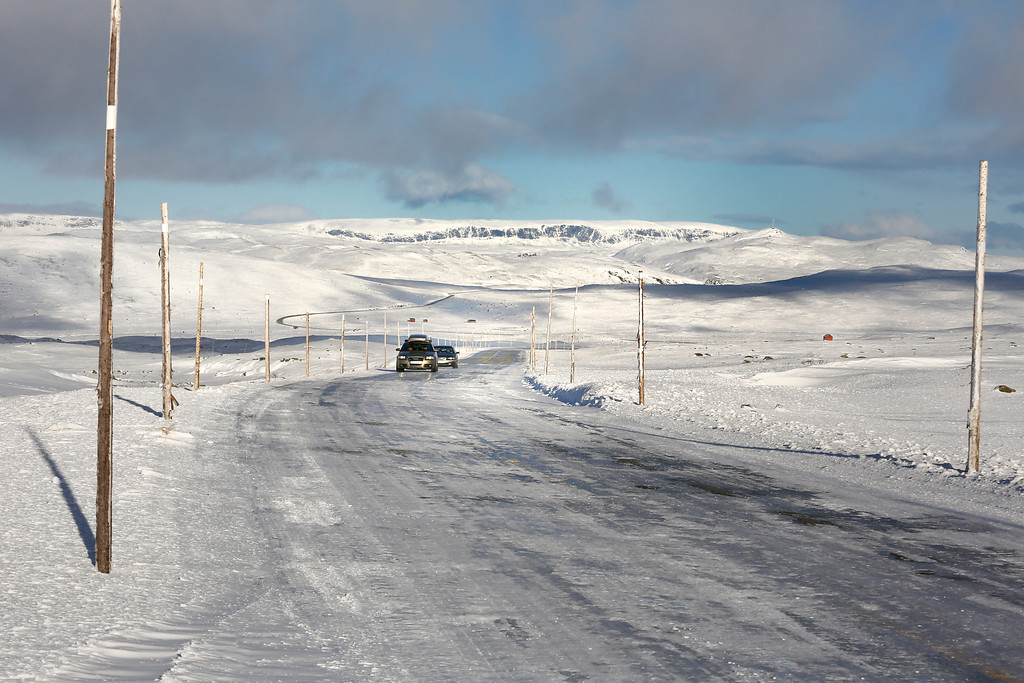
Summer brings a burst of alpine flora, while winter cloaks the plateau in a pristine white blanket, drawing cross-country skiers and snow enthusiasts.
Weather on the plateau can change quickly and the road is kept open for most of the winter thanks to snowploughs and convoy driving.
The sensational waterfall Vøringsfossen in the steep scenic Måbødalen valley, and the nearby fjordside village of Eidfjord are other highlights. The drive leads nicely into the Hardanger scenic route.
Jæren
The Jæren scenic route in Norway stretches along the country's southwestern coast, showcasing a landscape markedly different from the fjords and mountains typically associated with Norway.
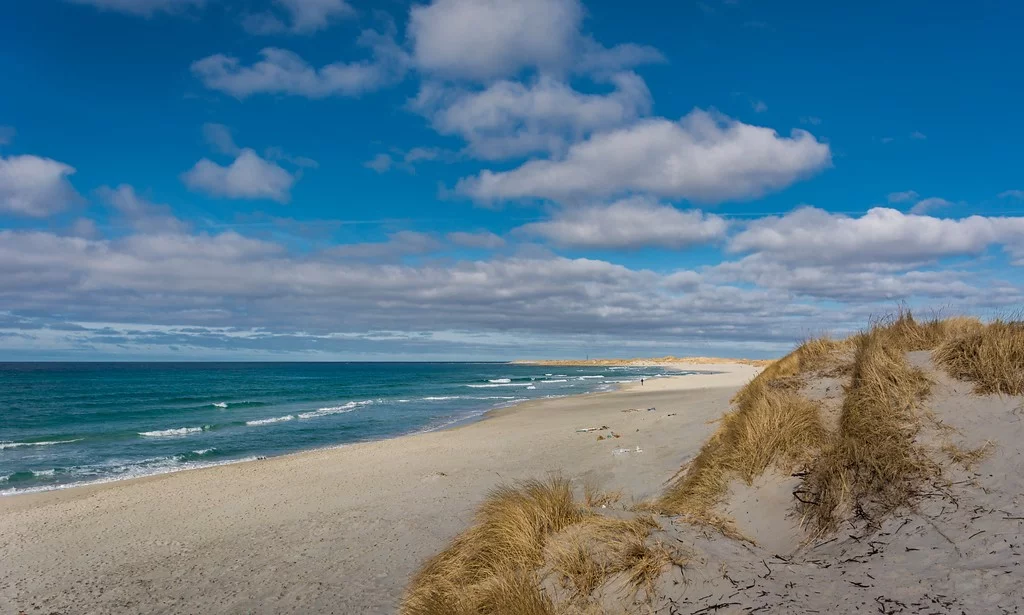
This route highlights expansive beaches, rolling sand dunes, and a unique agricultural landscape. The area is not only a haven for birdwatchers and nature lovers but also steeped in cultural history, reflected in its old lighthouses and rich farming heritage.
The Jæren route offers a blend of natural beauty and cultural insights, making it a distinctive and serene journey through one of Norway's most fertile regions. The long sandy beaches are perfect for picnics, slow walks or just pure relaxation.
For example, the long, sandy beach at Borestranda offers a vast, uninterrupted horizon that stretches out to sea. Orrestranda beach is Norway’s longest sandy beach, and during the summer months a cultural centre is open.
Gamle Strynefjellsvegen
Built in the latter part of the 19th century, the old road from Skjåk to Stryn known as Gamle Strynefjellsvegen features old stone masonry and long rows of guard stones.
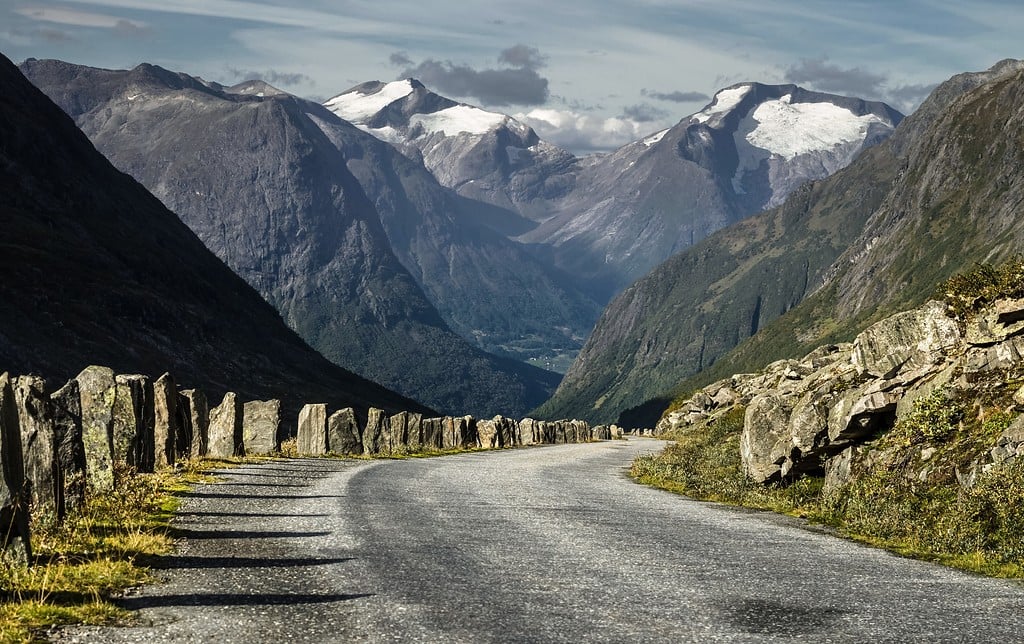
Traffic is light, because this historic stretch of road has been replaced by a series of tunnels on route 15 that travels from east to west around the northern edge of Jostedalsbreen National Park.
If you're in a rush, that's the route you'll take. But if not, this scenic detour is well worth your time. Hiking trails and mountain lakes beckon, while the drive down to the picture-postcard lakeside village Hjelle draws drivers and cyclists.
A high point of the drive is the Videfossen waterfall, which people have been visiting for as long as the road has been open.
Ryfylke
A drive along the Ryfylke scenic route is a striking journey through diverse landscapes, from the Lysefjord to Sauda and across the mountain pass to Røldal.
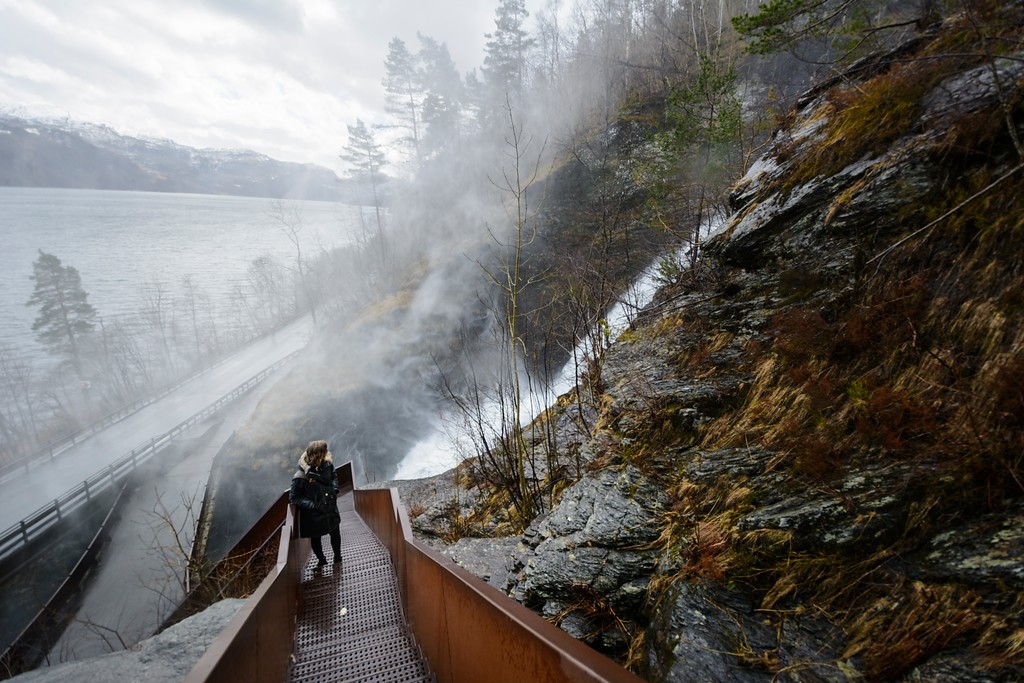
This route offers a vivid array of high barren mountains, lush hillsides, steep cliffs, and deep fjords. Saudafjellet mountain, with its rough and rugged terrain, is a highlight.
Given Ryfylke's length and variety, it's advisable to take your time, enjoy detours, and explore local attractions like Sauda's industrial heritage or the charming shore villages, such as Sand.
Sognefjellet
The Scenic Route from Lom traverses Norway's highest mountain pass to the innermost part of the Sognefjord, offering a journey through diverse landscapes.
Road Trip Resources: Car Rental in Norway – Travel Insurance
Starting in the lush Bøverdalen, the route ascends to 1,434 meters above sea level, presenting breathtaking views before descending towards the rugged terrain around the Sognefjord.
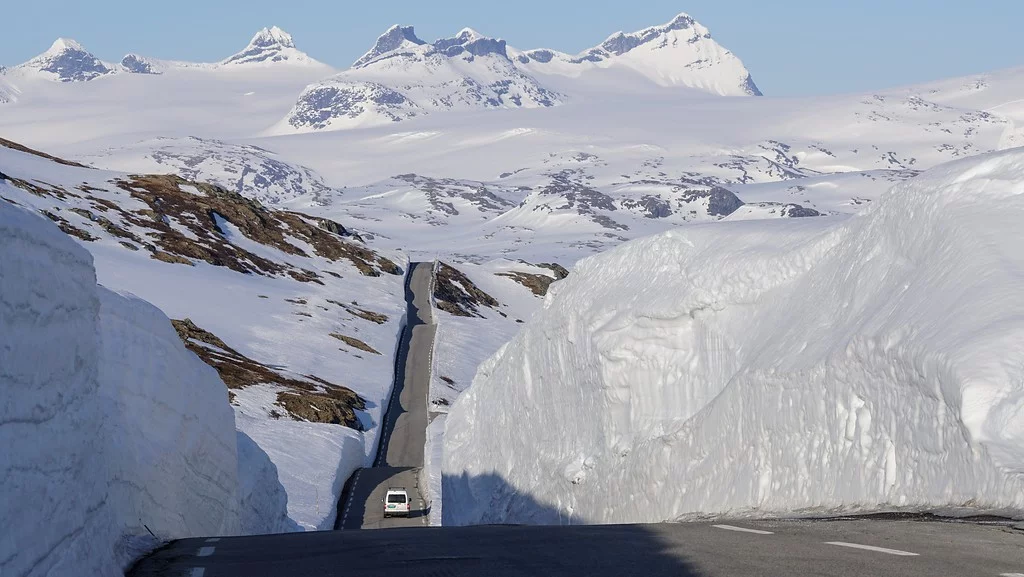
A vital connection between the west coast and inland areas, the road facilitated the transport of salt and fish eastwards, with butter, pitch and leather going west.
A gateway to the mountains of Jotunheimen, this route combines natural beauty with cultural heritage, making it a memorable passage through some of Norway’s most dramatic scenery.
Snow keeps the snow closed during the winter, but when it reopens in the spring you can drive along the road with banks of snow up to ten metres either side.
The Atlantic Road
Driving the Atlantic Ocean Road in Norway is an exhilarating experience, renowned for its dramatic views and engineering marvels.
This 8.3 km stretch of road connects the island of Averøy to the mainland, weaving across eight bridges over various islets and skerries, skirting the edges of the Norwegian Sea.
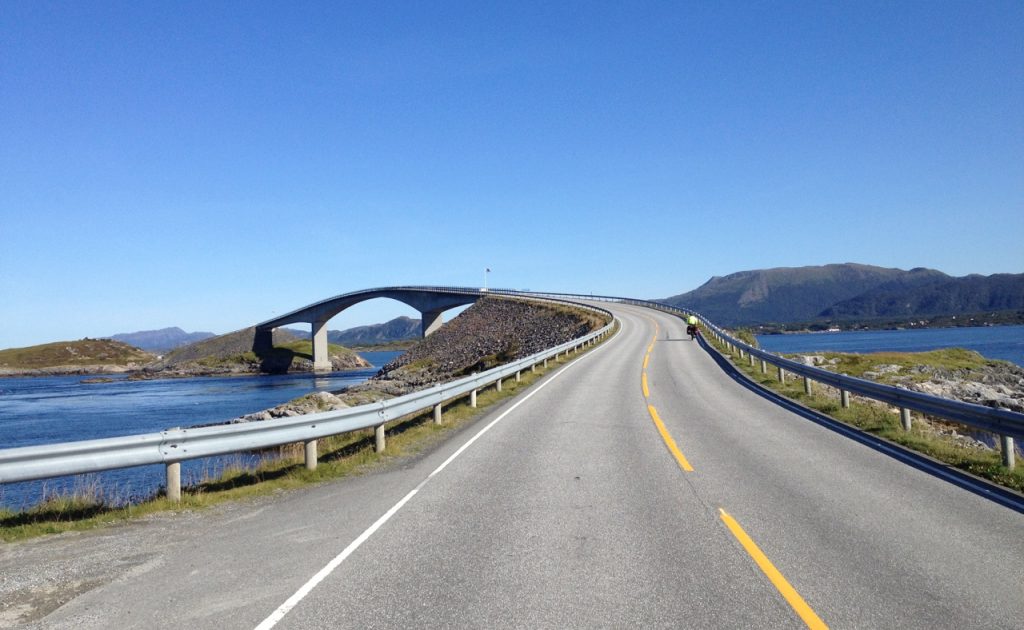
The route offers stunning panoramas, often enhanced by wild weather, making it a favourite for photographers and nature enthusiasts. A particular highlight is Storseisundet Bridge, an architectural wonder that curves gracefully over the turbulent waters.
Frequent pull-over points allow travellers to observe the natural spectacle, including rugged cliffs and birdlife. This road not only provides a thrilling drive but also serves as a showcase of Norway's innovative approach to connecting its remote coastal communities.
Central Norway
Although many of the scenic routes are located in the fjord region, there are some elsewhere in the country too. Let's start with the central region of the country.
Rondane
Driving alongside Rondane National Park offers a close encounter with Norway’s majestic nature, where high mountains and ancient cultural landscapes meet.
The road, lined by mountains reminiscent of ancient slumbering giants, unveils a slowly changing landscape marked by towering, snow-capped summits that gleam under the low sun.
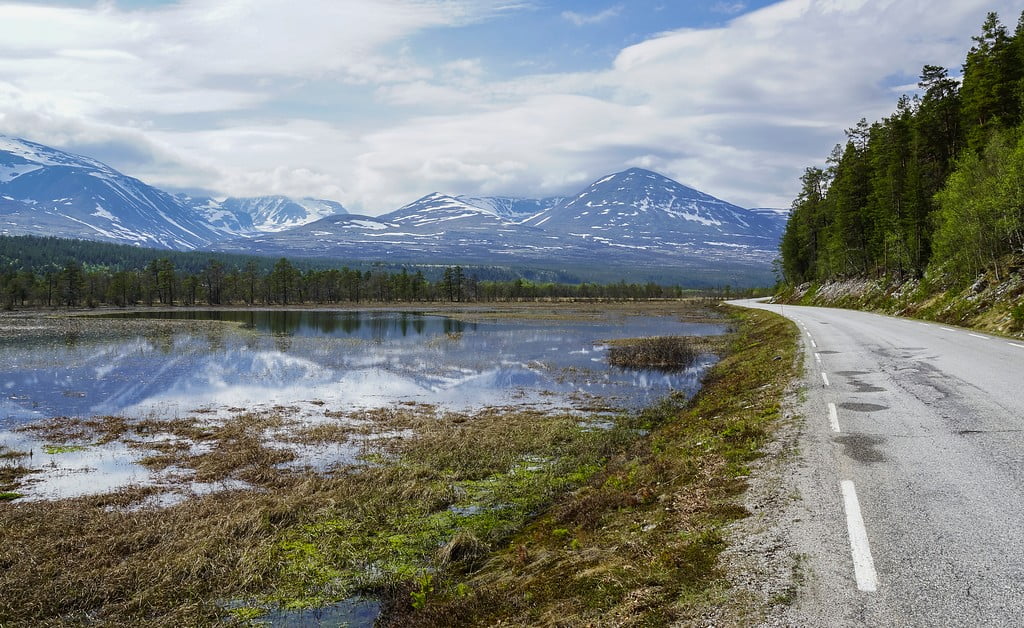
This serene and striking environment, the setting for Norway’s first national park, has long inspired artists and writers, drawing visitors back generation after generation.
For the best vantage point, visit the Sohlbergplassen viewing platform at Atnsjøen. The architect wanted to recreate the atmosphere from the 1914 painting “Winter's Night in Rondane” and did a fantastic job. It's a great spot for a selfie.
Valdresflye
Nestled in the heart of Norway, the exceptional Valdresflye scenic route unveils a realm where the majesty of the mountains meets the vastness of the sky.
Stretching across a breathtaking expanse, it showcases an open mountain landscape that stands both timeless and untamed. As you ascend its gentle curves and descend the valleys, you're met with panoramic views that change with every twist and turn.
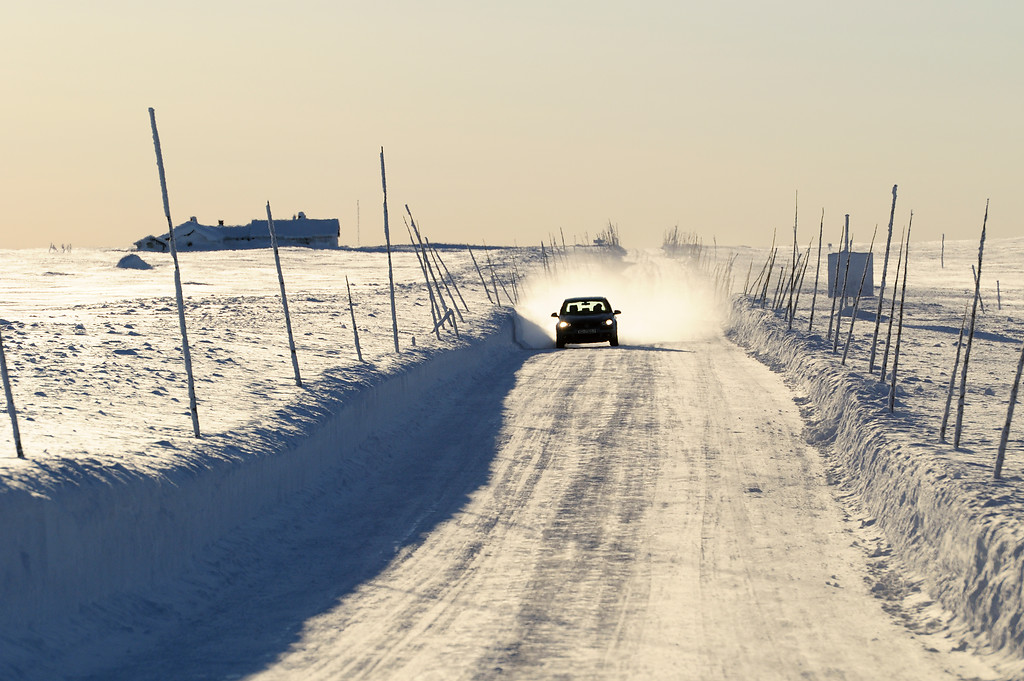
On clear days, the blue of the sky contrasts sharply with the rugged terrain, while mists and clouds occasionally swirl around the peaks, creating a mystical ambiance.
However, this magnificent journey has its constraints. The harsh Norwegian winter envelops the landscape, making the route impassable for several months.
But this seasonal closure only enhances its allure, as the pristine snow-covered expanses await those patient enough to witness it come spring.
Northern Norway
Explore Arctic Norway with these six scenic routes that traverse stunning landscapes, ranging from dramatic waterfront views to the raw, unspoiled wilderness of the Arctic.
Each route is carefully designed to highlight the diverse beauty of Northern Norway, with opportunities for wildlife sightings, cultural encounters, and visits to remote, picturesque villages.
Helgelandskysten
A scenic alternative to the E6 for those travelling between Trondheim and Bodø, the Helgeland coastal route is the longest of the 18 national scenic routes.
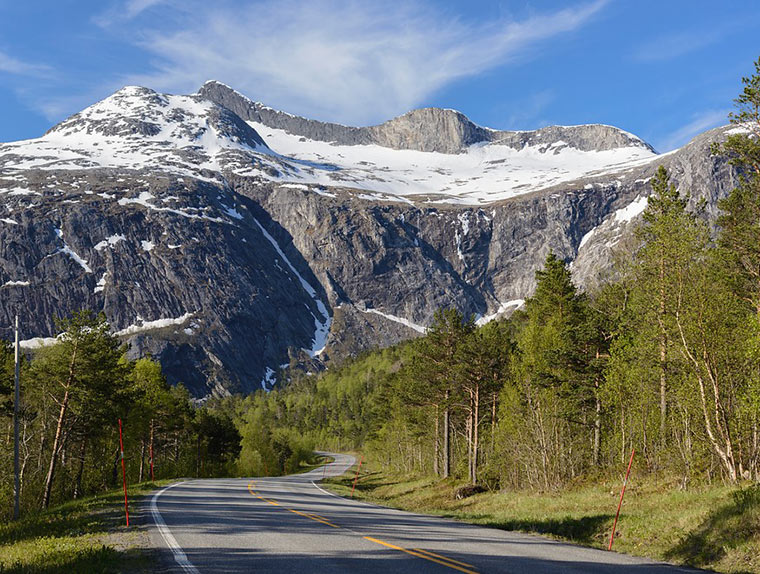
At 433 km and featuring six ferry crossings, allow plenty of time to thoroughly enjoy this route. Unlike many of the routes the terrain is flat and therefore perfect for cycle trips.
Crossing the Arctic Circle is a highlight for many, while the stone-vault bridge and sandy brach at the Storvika bay rest area is a picturesque spot and ideal for camper vans.
Established in 1942 by the German occupying forces, Grønsvik Coastal Fort was part of the ‘Atlantic Wall', extending from southern France to northern Norway.
Strategically positioned for its expansive views of the archipelago, the fort now serves as a museum that is open to the public.
Lofoten
An enchanting blend of untamed nature and cultural heritage, the Lofoten archipelago stands out as a jewel in Norway's crown.
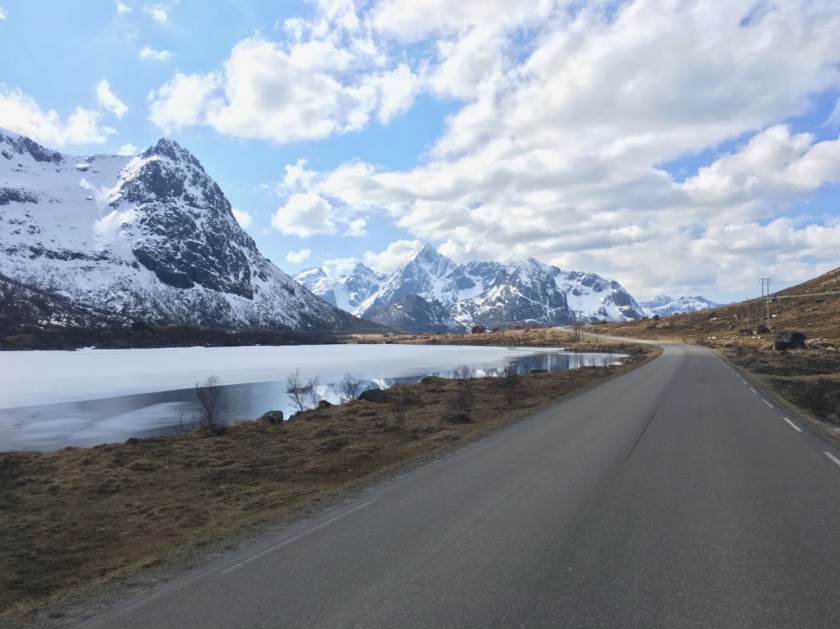
Stretching from Svolvær to Å, the E10 highway doubles up as the Lofoten national scenic route, offering a journey through some of the country's most awe-inspiring landscapes.
As you trundle around the twists and turns in the road, the Lofoten islands unfurl a visual feast of soaring mountains that plunge into the azure sea, quaint fishing villages that narrate tales of ancient maritime traditions, and pristine beaches.
Allow two to three times as long as you think you'll need. That's because around every corner is another mountain, fishing village, or beach just begging to be photographed.
Andøya
The island of Andøya at the northern end of the Vesterålen archipelago offers a pleasant alternative to the busier Lofoten islands.
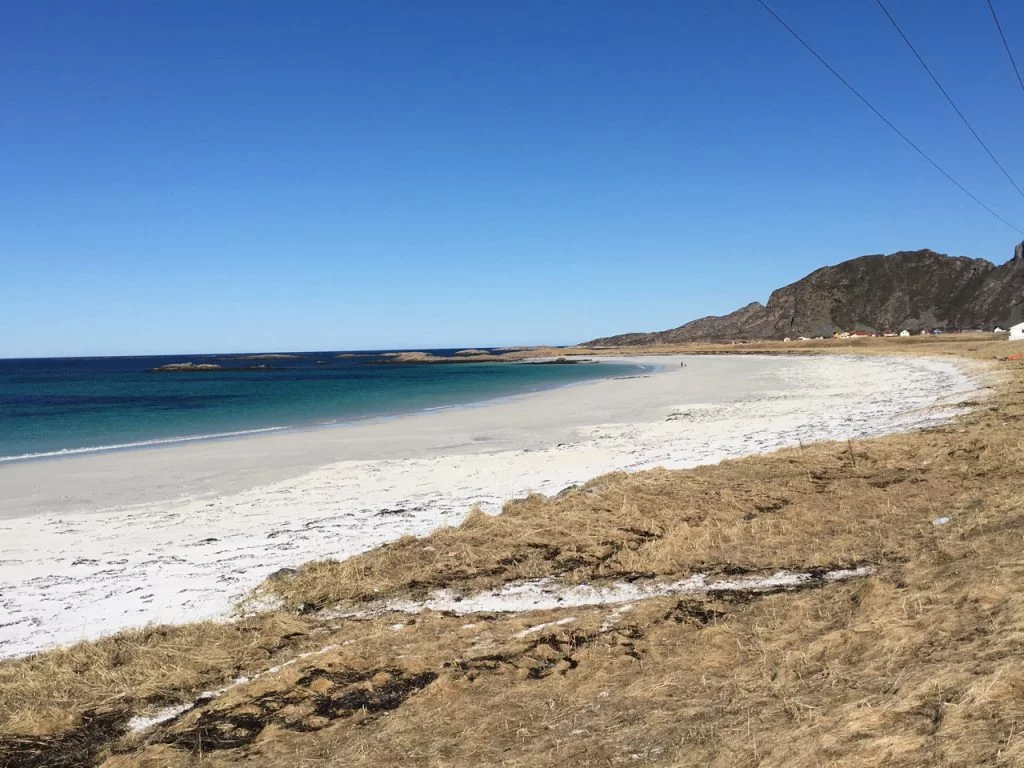
The Andøya scenic route hugs the western coastline and leads to the long sandy beach at Bleik. There's also views out to Bleiksøya island, which is home to thousands of puffins and a colony of sea eagles.
Senja
Between Lofoten/Vesterålen and Tromsø, the island of Senja is known for its steep mountains that plunge deep into the ocean. The scenic route offers a tour of Senja's highlights.
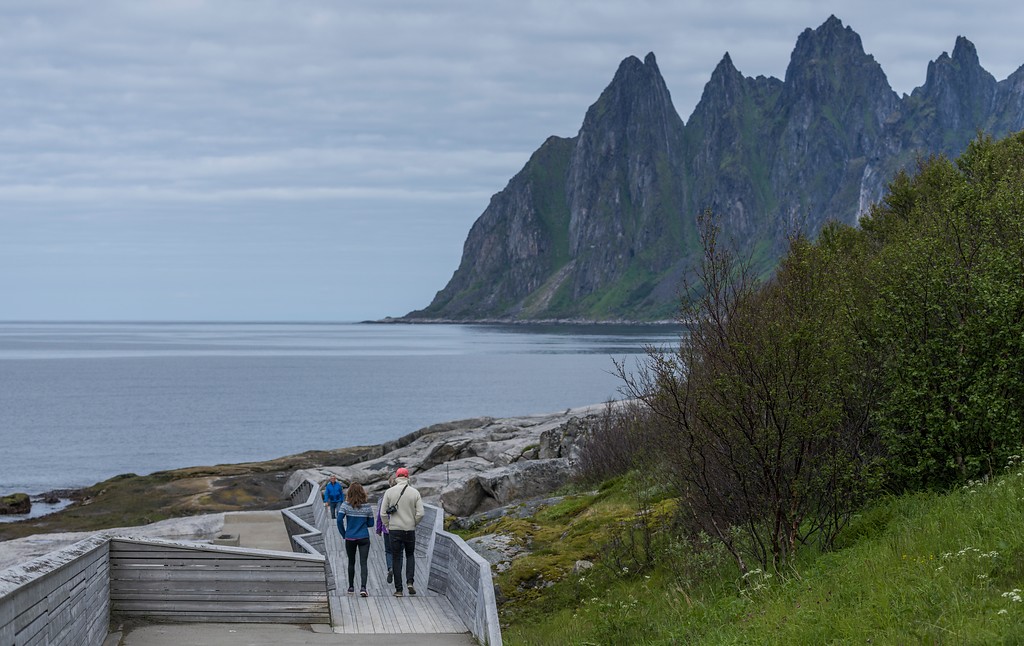
Tungeneset rest area, situated on the promontory dividing Steinsfjord and Ersfjord, features a Siberian larch walkway that provides views of the ocean and the sharp-peaked Oksen mountain.
Take a small detour from the scenic route to reach Mefjordvær, a historic fishing village nestled between the sea and mountains in Senja. It features attractive facilities and a unique closeness to the ocean with restful spots on the breakwater.
On Senja Island's seaward side, the tourist route winds up a hill overlooking Bergsbotn village, offering grand vistas of Bergsfjord and the peaks from a 44-metre platform where the ocean meets the sky.
Havøysund
If you're heading to the North Cape, consider a detour out to Havøysund. The lack of trees gives you a feeling of driving along a mountain plateau, yet the road hugs the rugged Arctic coastline.
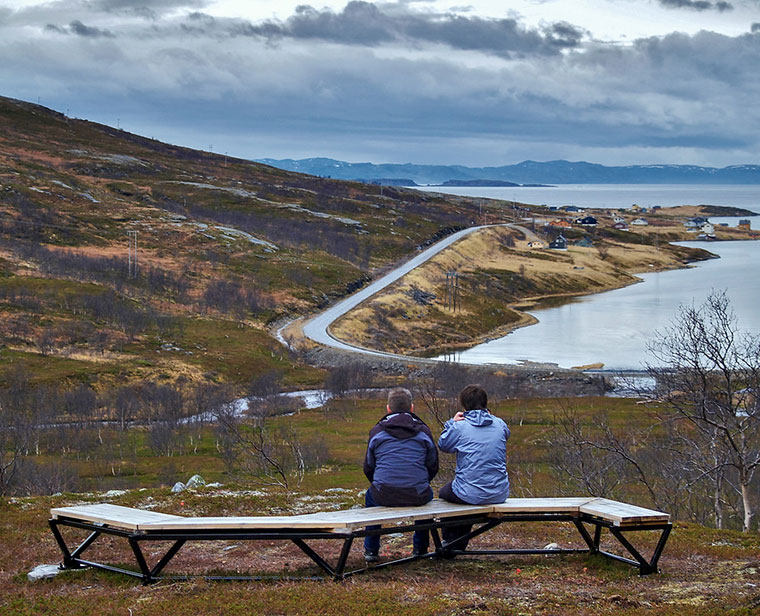
Amid the stark and dramatic landscape, the drive offers a unique experience where you may spot sea eagles and reindeer.
Known for its deep sea fishing and its coastal ferry stop, the surprisingly active village of Havøysund marks the end of the route. Here, you'll find Roni Horn's art installation at Ørahaugen.
Known as the Havøysund artwork, it features two large glass objects housed within a wooden hut that forms an integral part of the display, set against a backdrop where the shifting light of the north constantly alters the ambiance.
Varanger
Very few international tourists make it as far as Varanger, situated in remote Northern Norway, close to the border with Russia.
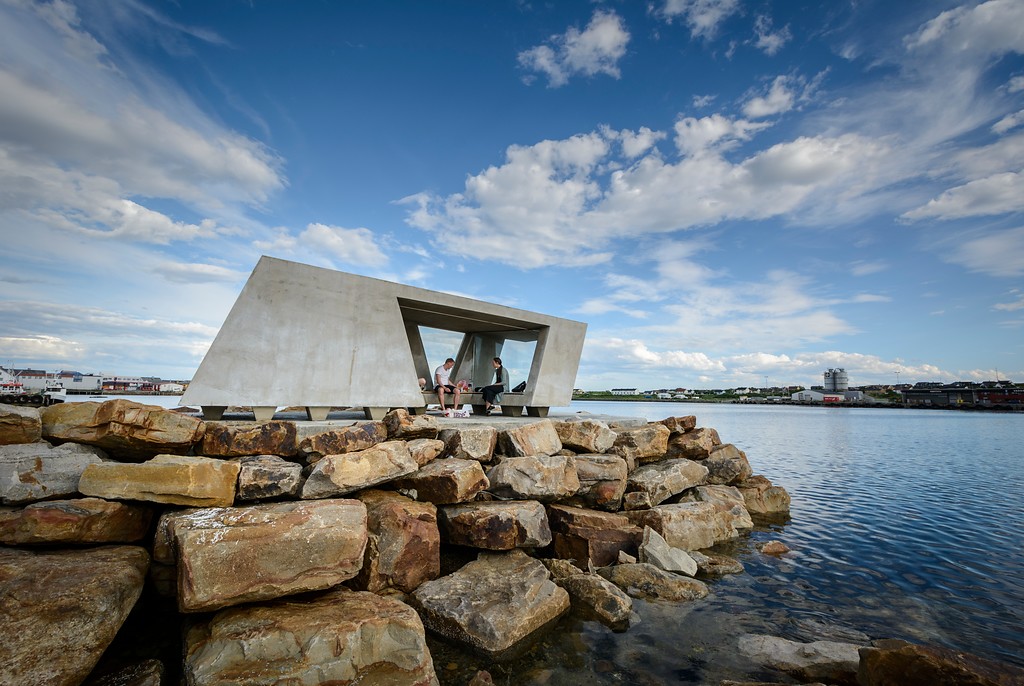
Rich in Sami heritage, the area offers glimpses into indigenous culture, while also being a haven for birdwatchers due to the number of rare and unique species found here.
Varanger is also home to reindeer (often on the road itself!) and a landscape of birch woods, marshland and rugged cliffs. Along the route, remnants of fishing settlements and Sami siida (camps) tell tales of survival and adaptation in this harsh environment.
Road Trip Resources: Car Rental in Norway – Travel Insurance
Whether you're planning a Norwegian road trip or just dreaming of travel, I hope you enjoyed this look at Norway's 18 national scenic routes.
Did this post inspire you to plan a road trip to Norway? If so, why not share your plans on Facebook or Pinterest? There's a pin for that. Just hit those social sharing buttons.

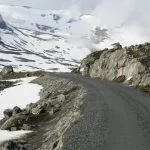

Dear David,
I am planning a road trip from mid Sept 2018 and time is not restricted but budget is.
I want to hopefully get as far north as Kersenes Russian border area and wanted to follow as many Scenic Roads as possible.
Intend driving my own 4×4 through the Channel Tunnel and up over the Oresten Bridge and onwards up Norway into the Arctic Circle and up north via e.g. The Atlantic Rd and back again down southwards by varying routes.
I would welcome your itinerary suggestions bearing in mind we are 69 year old couple reasonably fit and well.
We are easy with accommodation as long as its clean, comfortable and somewhere to eat at night.
I’ve driven globally but never in Norway so is it easy to get diesel even up in the remote North? My car has a range of c.400 UK miles.
Any advice welcome.
Hi, yes diesel is available but there are long distances between petrol stations so bear that in mind. Also, driving from Oslo to Kirkenes is an extremely long way and will be very expensive on fuel, so if budget is a concern you may want to stick to the area between Oslo, Bergen and Trondheim. Anyone driving from Oslo to Kirkenes would usually drive through Sweden/Finland as it is much more direct. The plus point is with a car you can stay fairly cheaply on campsites in basic cabins for 500-800kr per night, in most parts of the country. Have a fun trip!
Hello David,
I am from Brazil and I am planning a road trip in March (March/01 to March/09) from Oslo to Bergen passing by Geilo (where I am planning to stay 3 days).
I drove sometimes in snow (Canada and Germany) but I do not have much experience.
Do you recommend a 4×4 vehicle for this trip? How will be the condition of the road until March/10? Is there much snow at this time? This trip is famous by train. Do you think by car is a good option to see beautiful landscapes, although this is not a touristic road trip?
Thank you very much!
U can try renting a campervan. U can stop and rest anywhere u like. I went there in 2018 June renting a campervan from Stockholm. Most of the time I was in Norway
Hello David, I am planning for a road trip (Oslo -> Flåm->Bergen->Stavenger->Oslo) in July.
Looking for a suggestion to stay in a place (overnight ) between :-
i. (Oslo and Flåm)
ii. and while returning (Stavenger->Oslo).
Any other suggestions to plan the trip in a better way?
When driving in Norway we have looked out for signs for Hytte (cabin) and/or Rom (room) for self-catering. We have stayed in some amazing places in that way. However July is peak season, so available places may be more difficult to chance upon. It’s also useful to have the NAF (Norwegian Automobile Association) camping guide, which lists a national network of sites, telling you which have cabins (grade, price, how many). We’ve picked that up free at the first tourist office we happen upon, but you can order it in advance from their website. You can also get information online about campsites with cabins at https://www.nafcamp.com/en/campingplasser/ (NB – for many cabins you need your own basic bed linen etc).
Hi.
We’ve a plan to go to Nordkapp by motorbike ij July. Any warning, information, danger, trick, instruction and suggestion for better and safe ride, please?
Thank you
7 years ago my husband and I got stranded at Oslo airport, big snow storm came in after “season”. Airport shut down before our final flight-the weekend before Easter holiday started. No flights, trains or ferries for 4 days so we opted to drive where my family lives – Fauske (Nordland). It was an amazing & long drive – but something we probably wouldn’t had done otherwise.
Hello, I am planning to come to Norway from 7 April to 13 May 2024 = 5 weeks. My plan is to fly to Oslo, Alesund, Kristiansund, Trondheim, Svalvaer then last again to Oslo. Shall I fly to every place or drive ? Thank you, Marco.